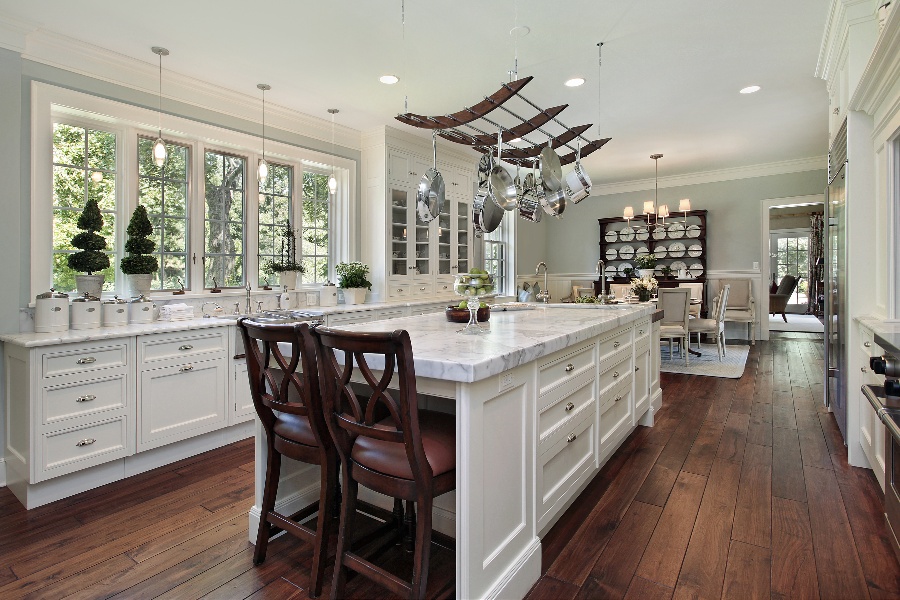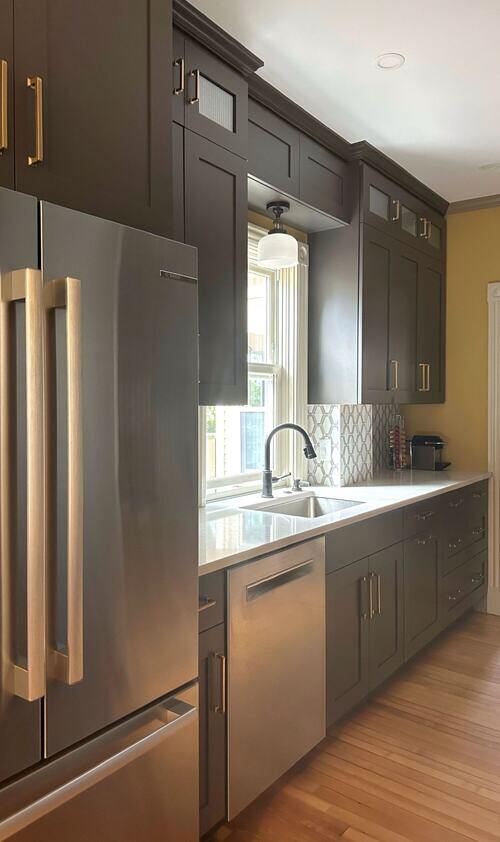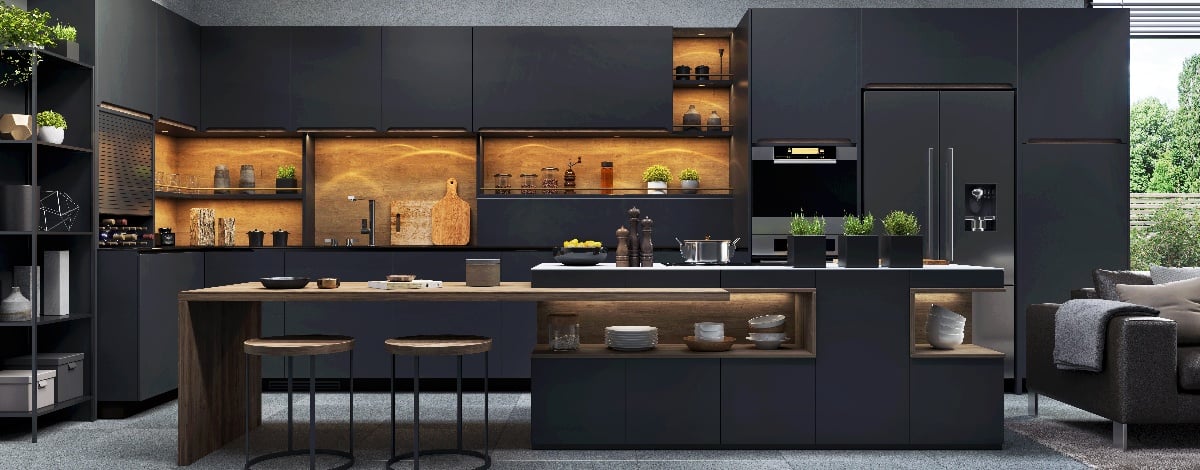A kitchen island is an elegant, useful addition to a kitchen design, but it's not right for every kitchen.
Islands require a certain amount of space and, in fact, the surrounding walk-space is what makes it an island.
Every homeowner has a right to design their dream kitchen, and this project is shaped by your kitchen architecture. Are your kitchen and cooking style right to make a new island worth it?
Asking yourself a few key questions can reveal the answer.
Do You Have the Floor Space?
First, consider the space you have to work with. If you want a quick installation, measure the currently open space, the floor from counter-to-wall-to-counter.
With an open kitchen, you could have plenty of space, even using the island as the line between the kitchen and dining area.
In a smaller kitchen, a narrow island or just a floating bar might be elegant instead. If not an island, maybe a "peninsula" (extending from the wall or counter" is what you're looking for.
If you're looking to make a big change, measure from wall to wall and consider new counter installations to make space. You might clear a wall, moving your counter space to the center, for example.
What Do You Get From an Island?
Next, consider what you really get from installing the island. Do you want an extra sink and prep area?
Do you want a bar for family breakfast or evening guests? Do you want to move your cooktop to the center for an entertainer's kitchen?
The island will give you a whole new cooking surface to work with, so what elements make the installation truly worth it for you?
Alternately, what can you move to the island, freeing other space? Moving your sink or stove, for example, or giving yourself more storage in the center of the room.
Can You Win Floor Space with an Island?
For those who plan to completely rearrange the kitchen cabinets, an island might actually allow you to regain floor space.
For example, you might pull back some wrap-around counters and use an island con concentrate your kitchen surfaces on one end of the room.
Or, by adding an island with internal storage, you can win back space that had been assigned to external shelves for those now-stored items.
Do You Need Extra Surfaces?
A kitchen island is most useful for a chef or family of chefs who need the prep space. If you are constantly in need of another counter for chopping or to hold plates, then an island might be well worth the installation effort.
If you desperately need a second sink or a place to stack tiered shelves, the island might be just what you need to perfect your workflow.
Do You Want a Breakfast Bar?
Islands are also a great way to make a kitchen more social. The island, especially with a cooktop, can become the new center for family breakfast.
Cook up pancakes while your family members sit on barstools, enjoying hot breakfast and conversation in the mornings. If a breakfast bar is what you're after, an island or an extending bar can be an enjoyable addition, provided that you have the space.
Is It About Accessibility?
Last but not least, the value of an island might be defined by the accessibility it offers. If someone in your household is handicapped and needs extending or surfaces without an under-counter, an island is a great way to add that versatility.
A kitchen island designed for accessibility can make the kitchen welcoming for both standing and sitting chefs, while still providing plenty of space for walkways and prep.
---
So is it worth it for you to install a kitchen island? That entirely depends on what you want from the island design and the space available to build.
If you want to work with your architect and make your kitchen more functional with an island, we can help!
Contact us today to talk countertop and island designs that will transform both the aesthetics and usefulness of your home kitchen.












